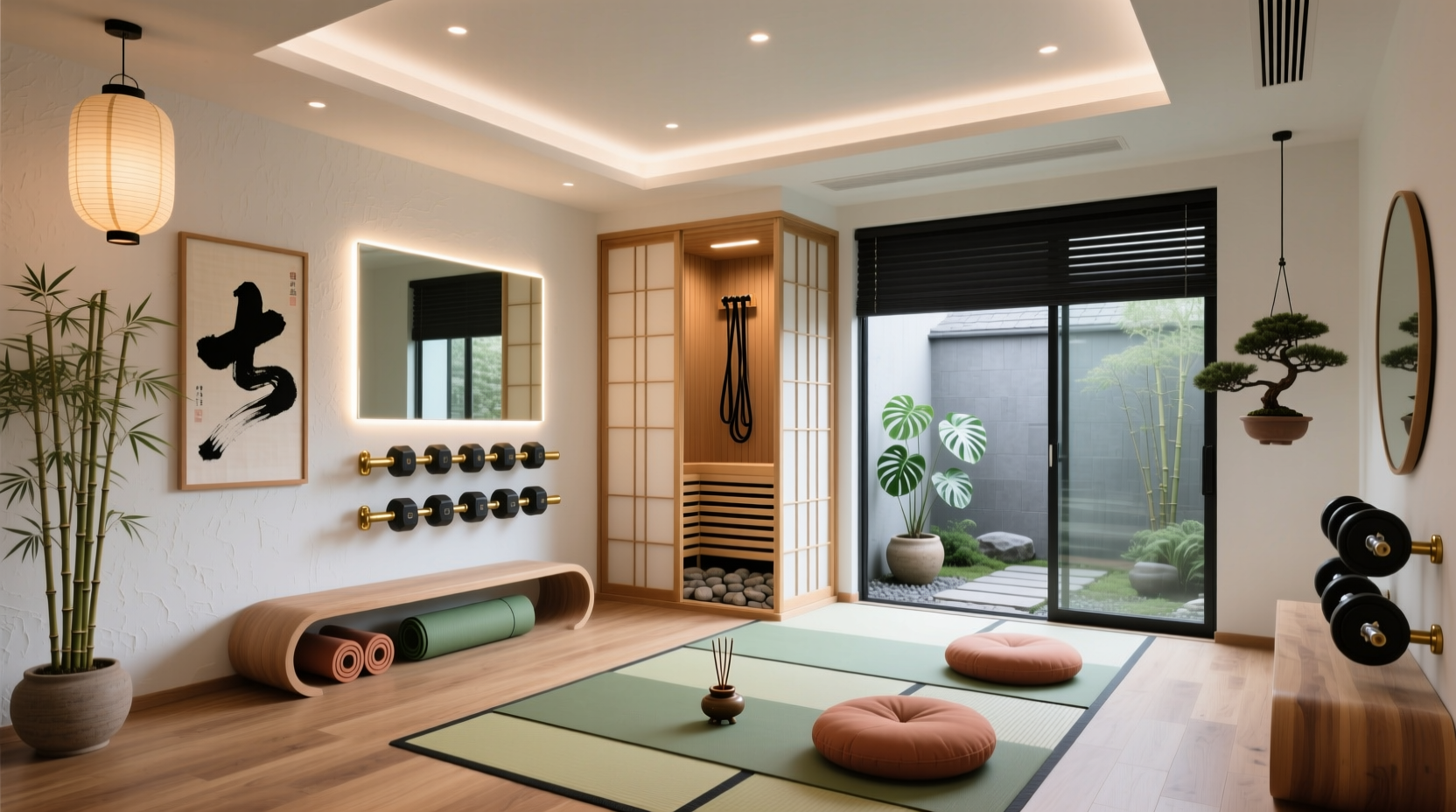Basements have this weird vibe sometimes, don’t they? They’re dark, kind of cold, and often forgotten. But imagine turning that gloomy spot into a sleek Japandi gym. Japandi style is all about mixing Japanese minimalism with Scandinavian warmth. It’s clean, calm, yet cozy. Perfect for a home gym where you want focus and zen at the same time.
When people think of home gyms, they picture gray concrete and dusty machines. But Japandi basement gyms flip that idea upside down. Think warm woods, muted tones, and a few pieces that actually make you want to spend time working out. It’s less about a hardcore sweat dungeon and more about a mindful workout haven.
1. Embrace Natural Materials
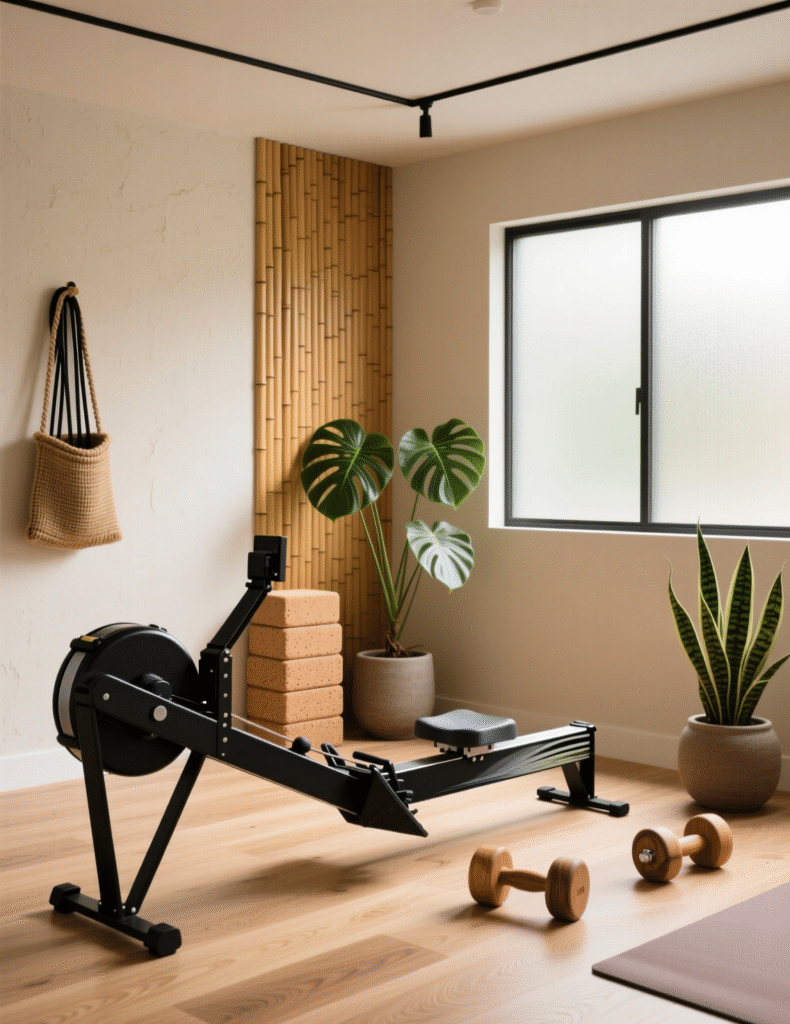
Wood is your best friend here. Not just any wood, but lighter Scandinavian-inspired planks for flooring, or bamboo accents along walls. It adds warmth to what can otherwise be a chilly basement. A few subtle Japanese touches, like a shoji-style divider, instantly lifts the space. Imagine stepping off the treadmill and seeing soft, natural textures rather than cold steel.
Stone elements work too, maybe in a corner for yoga or stretching. It feels grounded, like nature came indoors. The key is balance—you want natural, but not cluttered. Minimalism doesn’t mean boring. It just means every piece matters.
2. Keep the Palette Calm
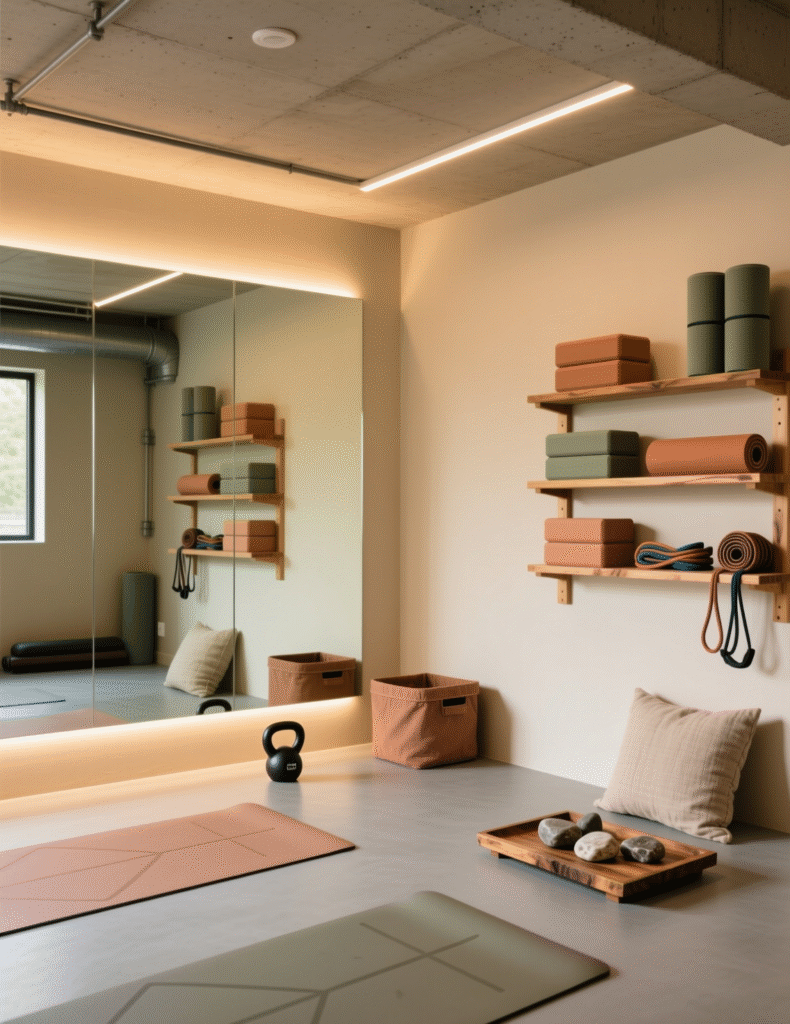
Colors set the mood. Japandi loves muted tones: beige, soft grays, warm browns. Avoid neon walls or bright red accents—it just screams “gym!” and fights the calm vibe. Your mind relaxes when the room whispers instead of shouts.
Accent colors can appear in subtle ways. A deep green plant, a soft ochre yoga mat, or muted black equipment. Keep it clean, but not sterile. The trick is to make the gym feel like a place you want to linger in.
3. Maximize Natural Light
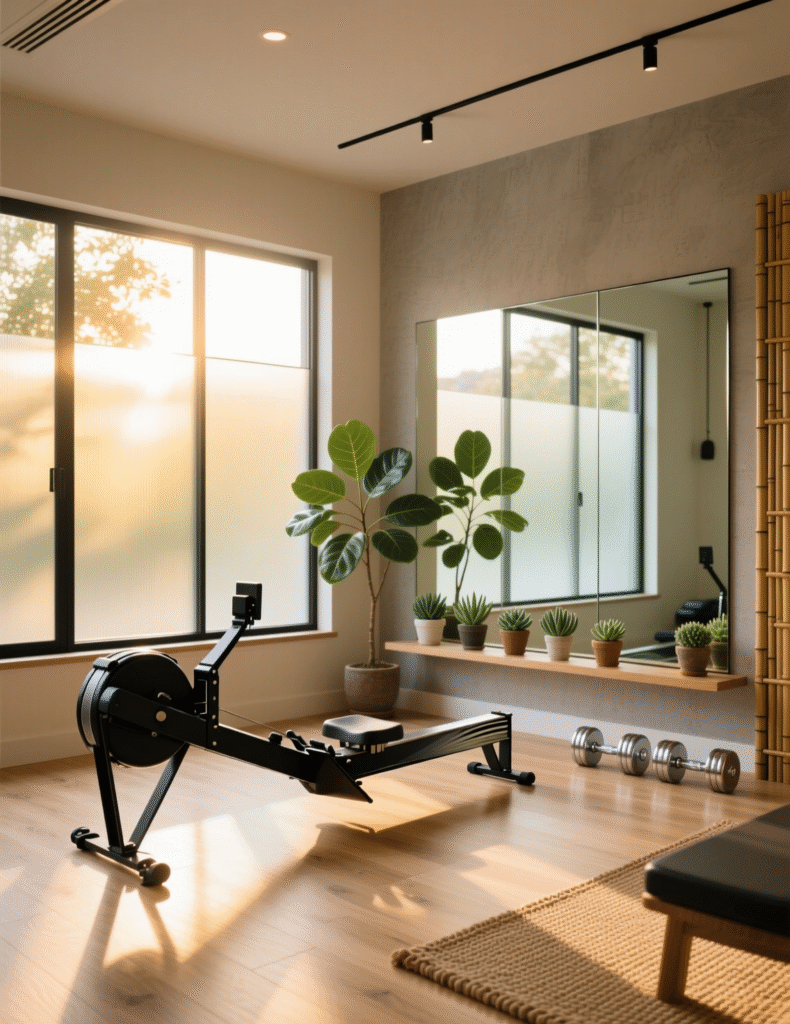
Basements are tricky for light. If you have windows, use sheer blinds. Let sunlight filter softly. If not, invest in warm LED lighting that mimics daylight.
Layer your lighting. Overhead lights for general use, soft floor lamps for stretching zones, and maybe a small strip of light behind mirrors. Shadows in a Japandi gym aren’t bad—they create depth. Just avoid harsh fluorescents that make the space feel like an office.
4. Minimalist Equipment, Maximum Effect
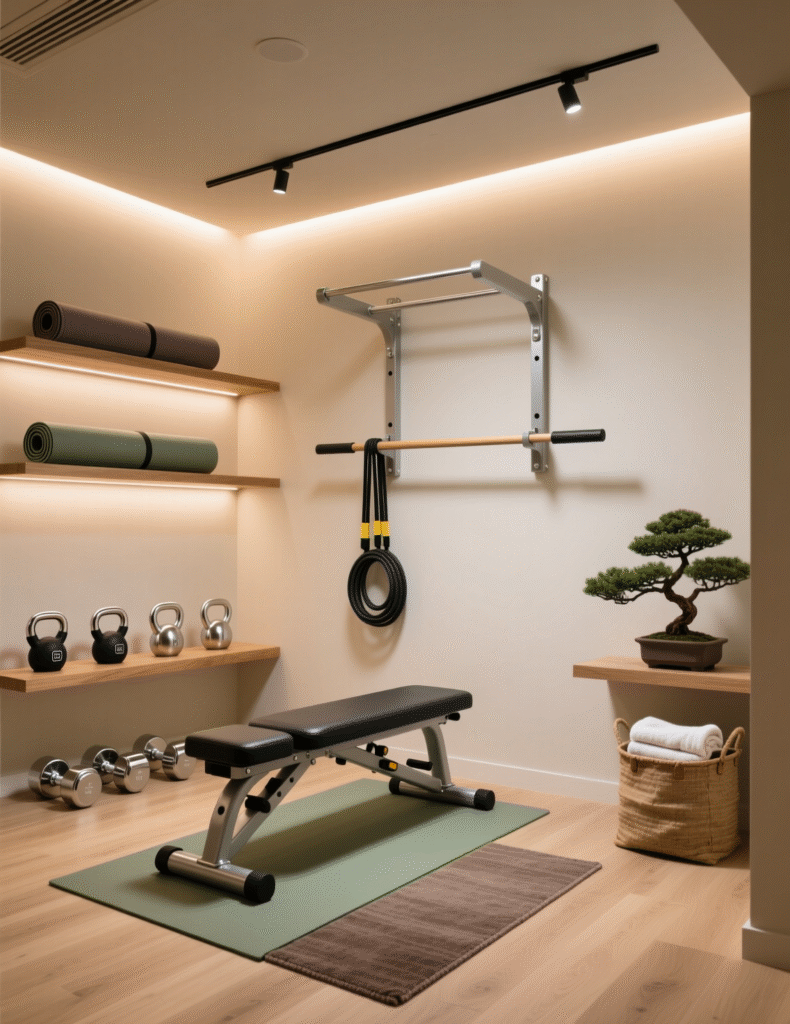
Japandi gyms don’t need walls of machines. Pick multi-use equipment that blends into the style. Wooden kettlebells, matte black dumbbells, compact rowing machines. The goal isn’t clutter; it’s intentionality.
Open shelving works great here. Store your mats, blocks, and straps neatly. And please, keep cords hidden. They ruin the calm. Each item should have a home. When you walk in, it feels spacious, not chaotic.
5. Mirrors for Depth and Focus
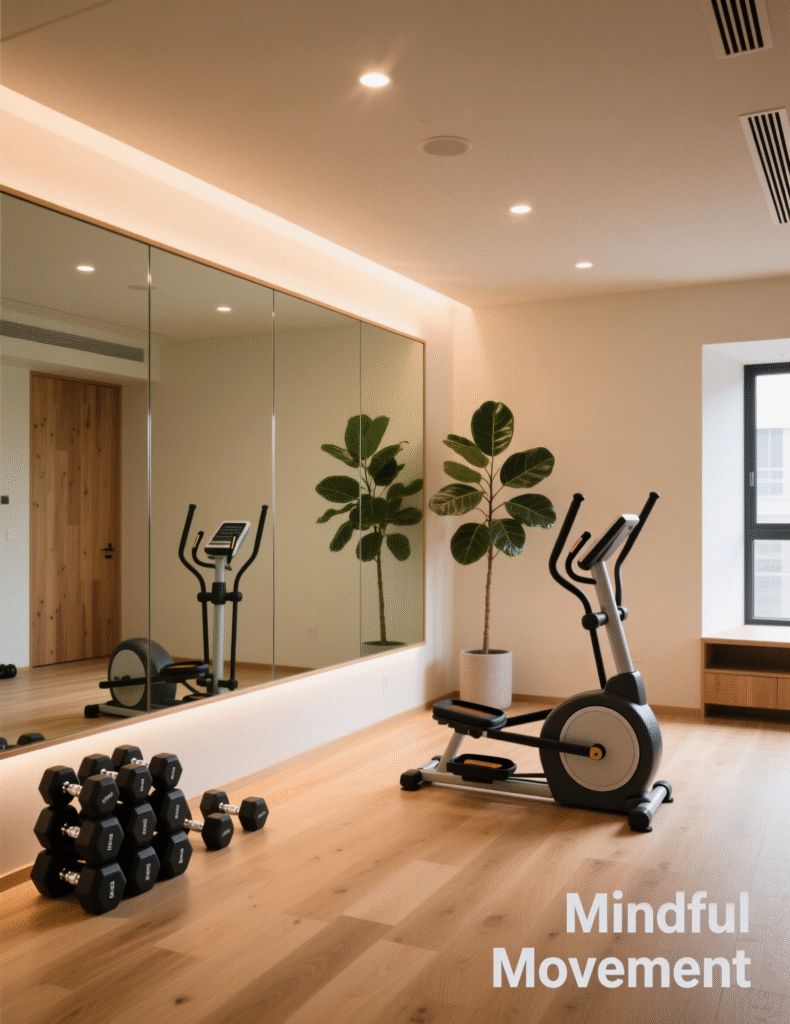
Mirrors aren’t just for checking form—they make the basement feel larger. Full-length mirrors along one wall, minimal frames, no flashy trims. The reflection doubles the space and adds light.
A neat tip: slightly foggy or antiqued mirrors give texture without losing the minimalist aesthetic. It’s subtle, Japanese-inspired imperfection. You notice it only when you’re really looking.
6. Smart Storage Solutions
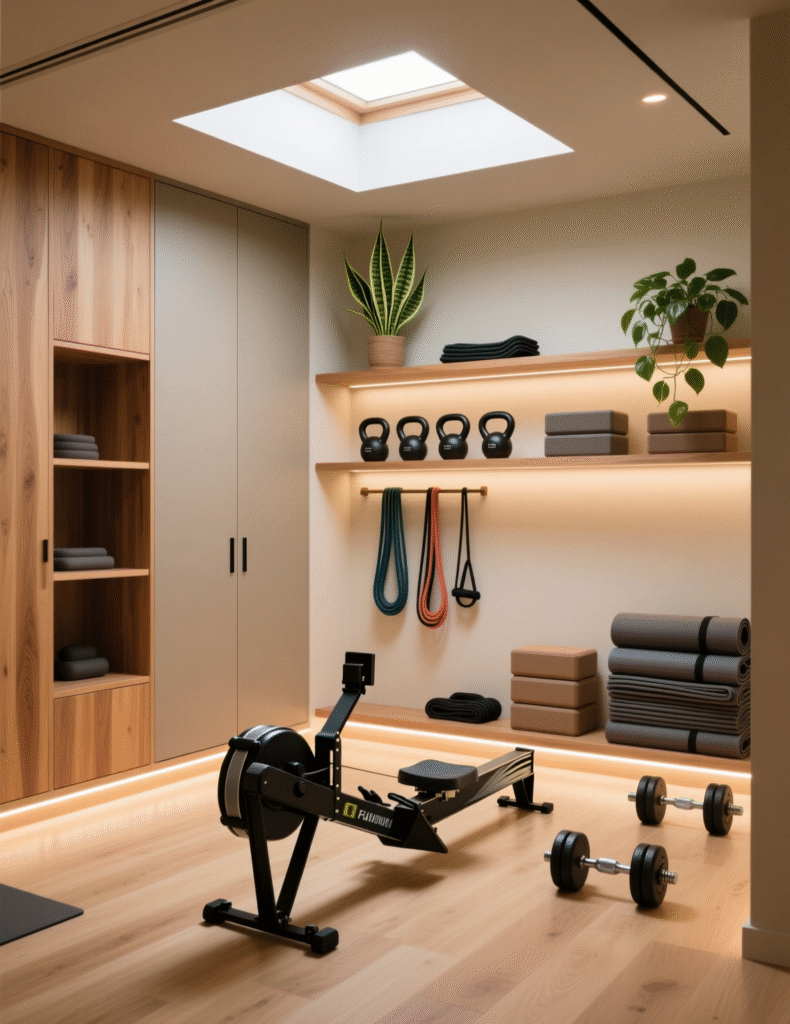
Storage can make or break a Japandi gym. Use built-in shelves, hidden cabinets, or low-profile storage benches. Everything needs a home. A gym shouldn’t look like a box of forgotten equipment.
Baskets or wooden crates are perfect for yoga mats and towels. Keep everything tidy, but keep it accessible. The easier it is to clean and organize, the more peaceful the space feels.
7. Zen Corners and Mindful Spaces
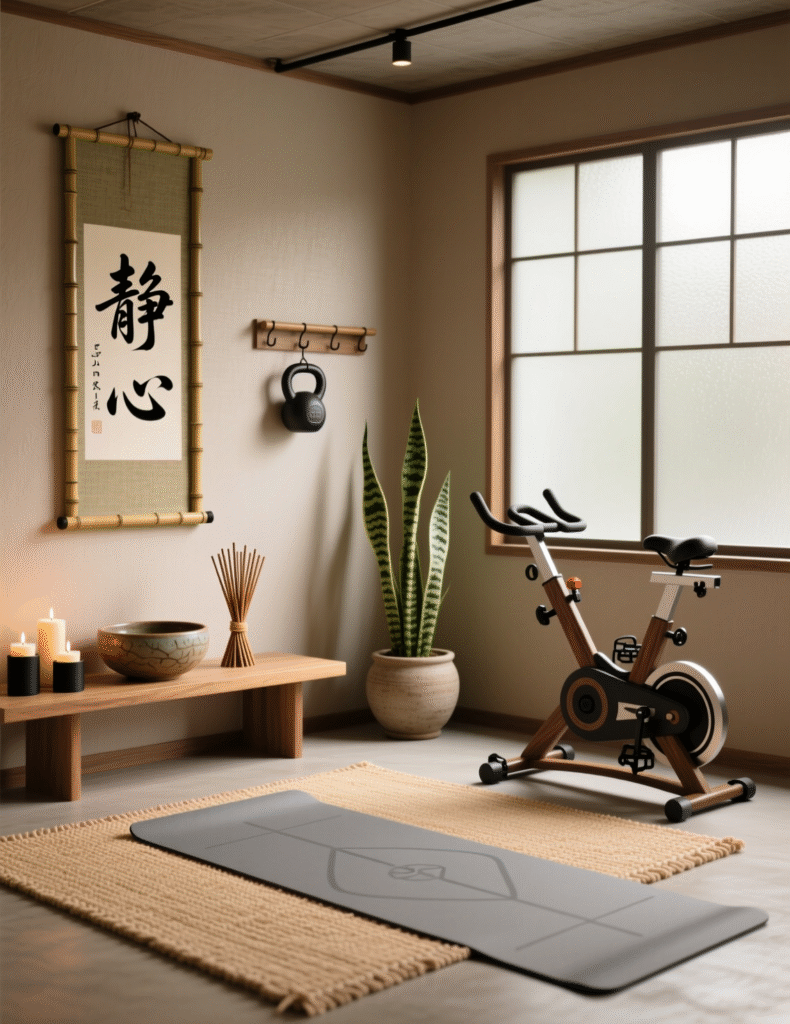
A small meditation nook or stretching corner adds a ton of value. A floor cushion, a bonsai tree, maybe a low table with a candle or essential oil diffuser. These small touches shift the vibe from “workout dungeon” to “mindful retreat.”
Even a tiny water fountain can help. The sound of trickling water lowers stress and enhances the Zen feel. It doesn’t take much, just thoughtful placement.
8. Textures Over Patterns
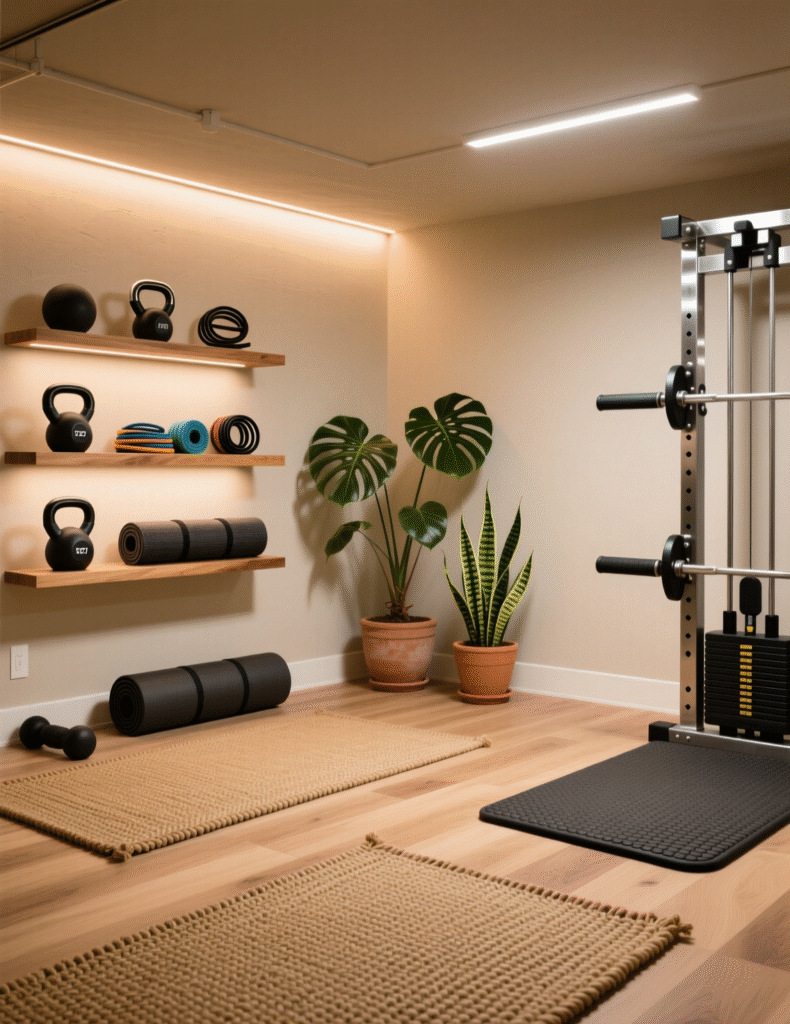
Japandi style shies away from busy patterns. Instead, focus on textures. Woven mats, linen curtains, wooden panels. These give depth without shouting for attention.
Soft rugs or small tatami-style mats can define stretching areas. Combine smooth and rough textures—wood, stone, fabric. It’s all about tactile contrast. Your feet and hands notice, even if your eyes don’t.
9. Indoor Plants for Life
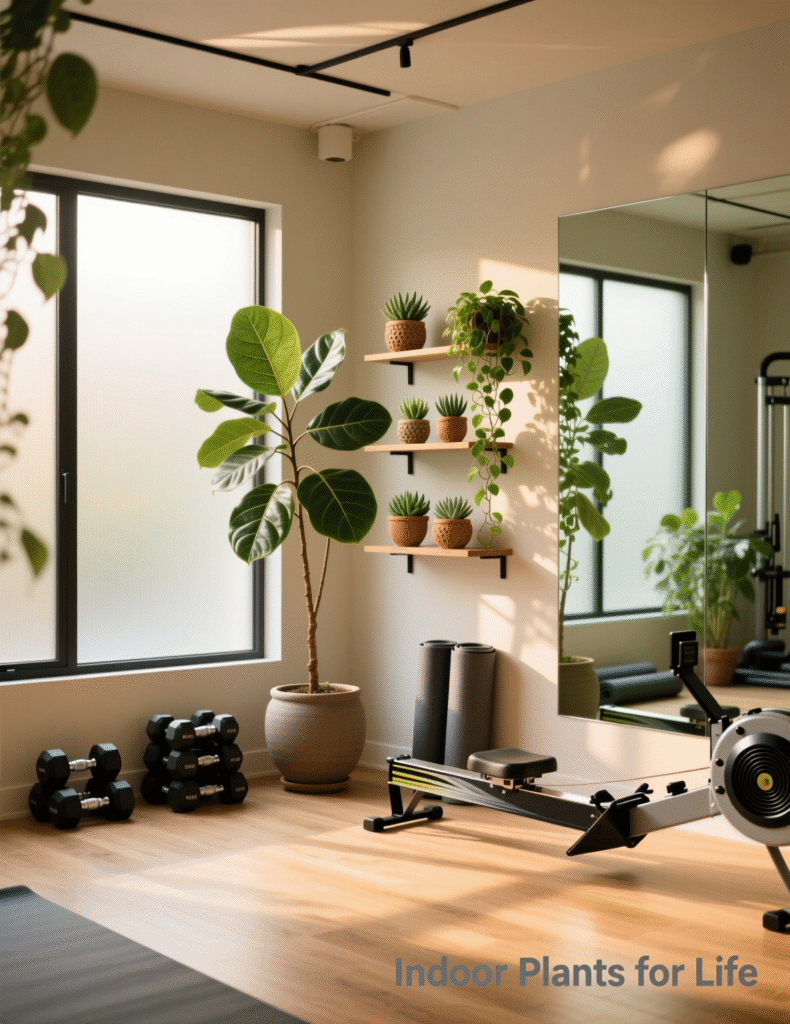
Plants breathe life into a basement. Small potted plants on shelves or tall leafy ones in corners. They add color, texture, and a hint of nature’s calm.
Go for easy-care species: snake plants, fiddle leaf figs, or bonsai trees. Hanging planters can save floor space and add layers. The greenery contrasts beautifully with muted walls and wooden tones.
10. Personal Touches Without Clutter
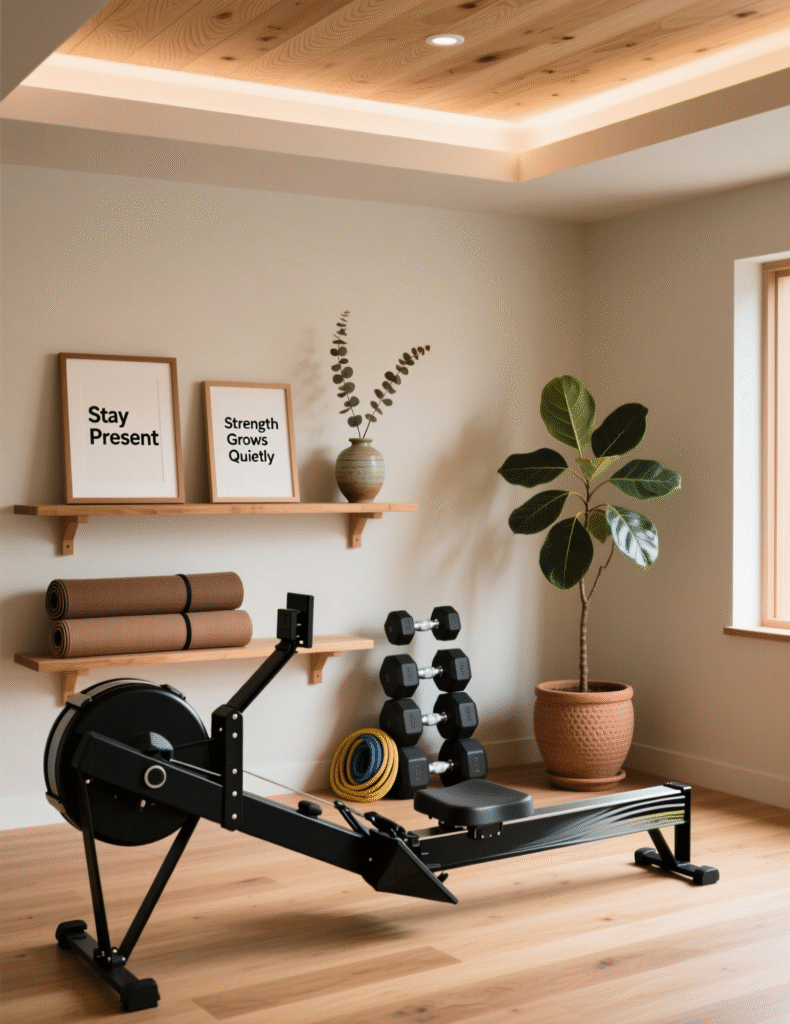
Japandi gyms should feel personal, but not busy. A single piece of art, maybe a sumi-e painting or a minimalist print. One or two objects that resonate with you. Avoid the temptation to decorate every wall—it ruins the calm.
Photos or motivational quotes? Only if they inspire mindfulness, not just sweat. The aim is harmony, not a gallery of posters.
11. Incorporate Curved Lines
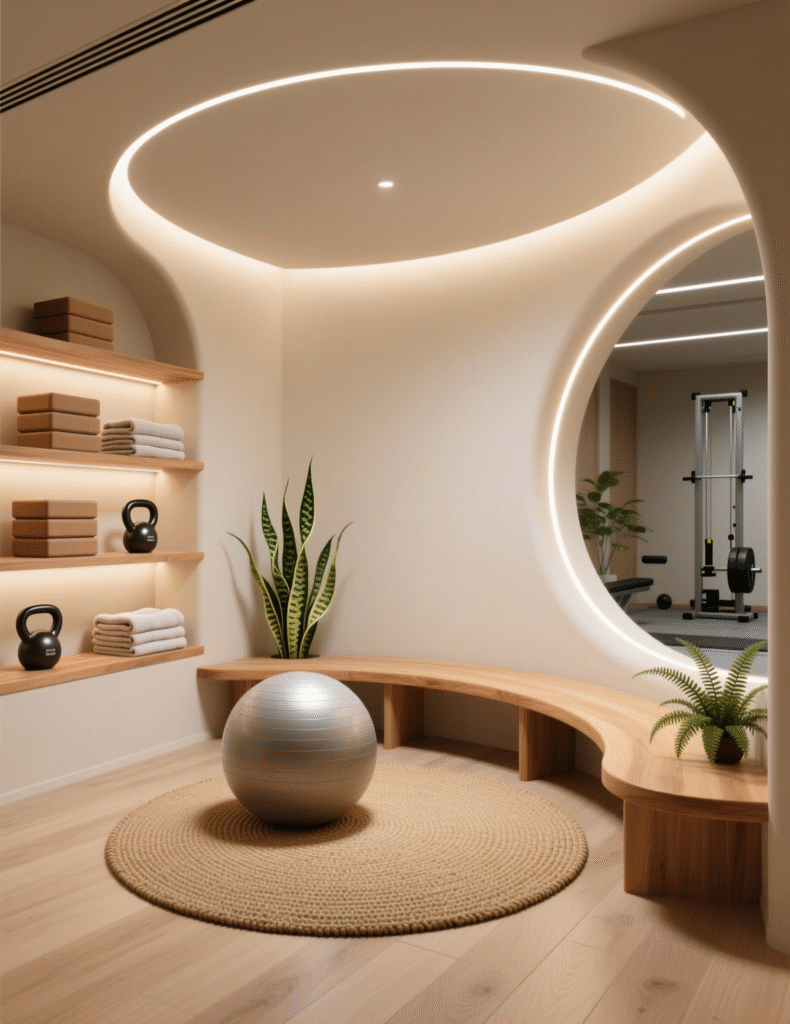
Straight lines are classic, but subtle curves soften the vibe. A rounded yoga platform or curved storage bench makes the space feel more organic. Even a circular mirror or arched lighting fixture can break monotony without cluttering the style.
12. Add Hidden Workout Zones
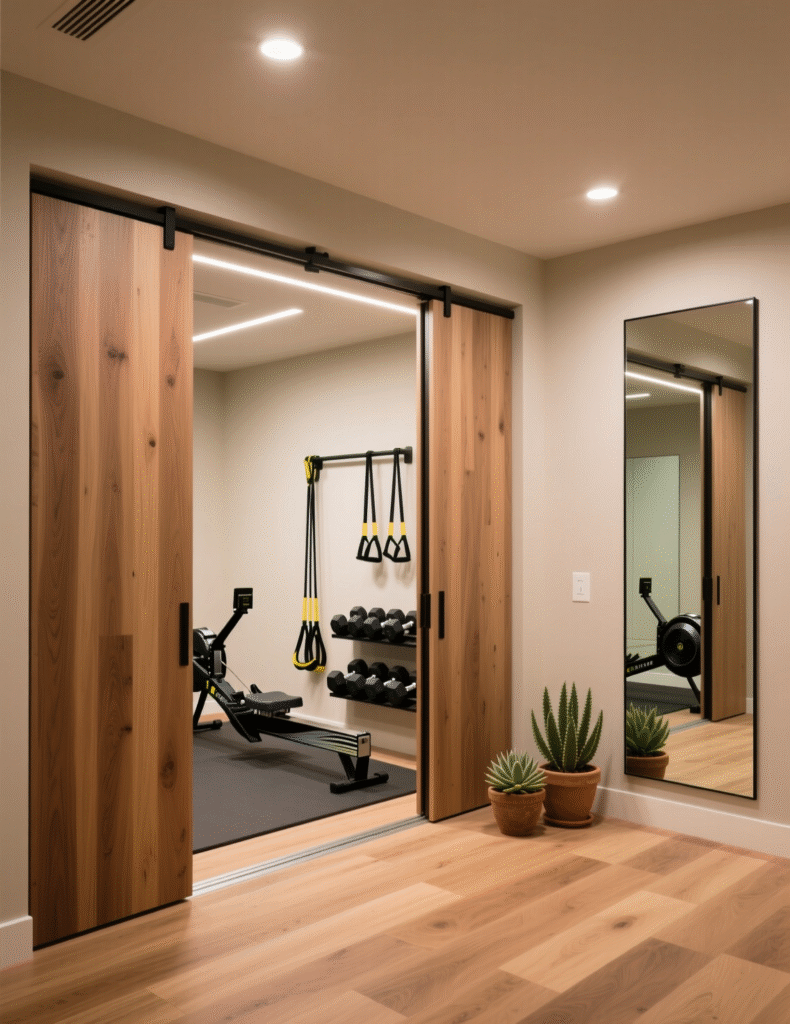
Use sliding panels or curtains to create mini workout pockets. Maybe a small corner for stretching or resistance bands. It keeps the gym flexible and playful while maintaining Japandi minimalism.
13. Integrate Smart Tech Subtly
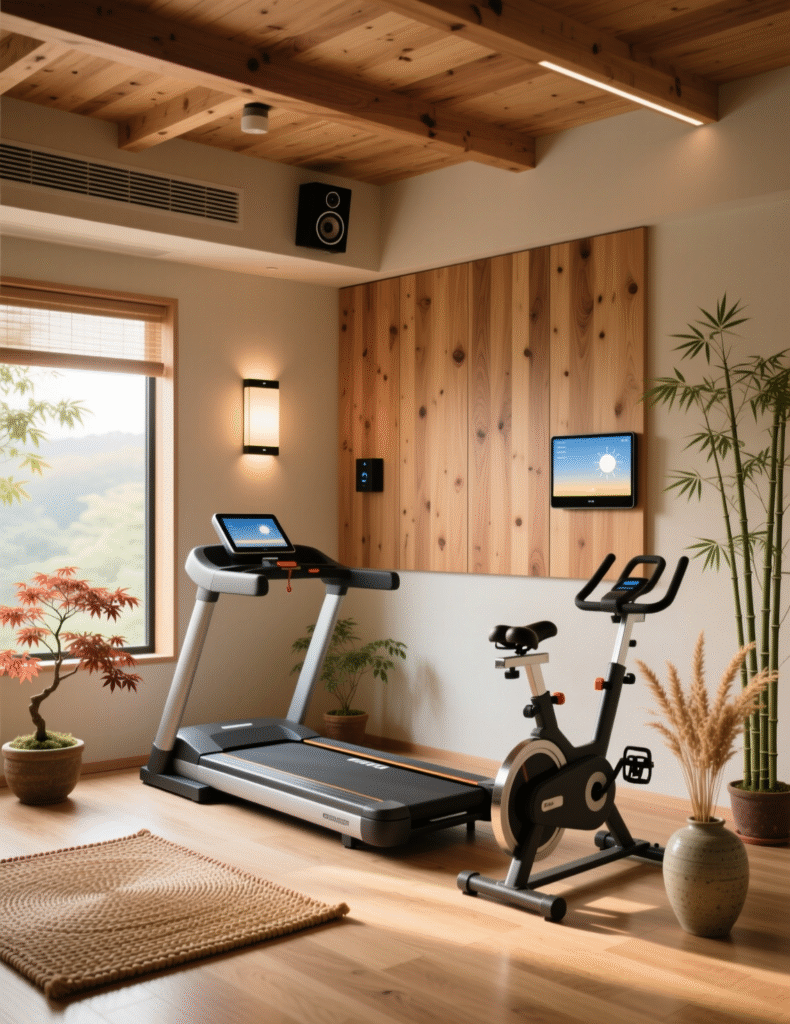
Smart mirrors, speakers, or adjustable lighting don’t have to scream “high-tech gym.” Conceal wires, use natural wood casings, or hide devices behind panels. Tech should blend in, not dominate.
14. Layer Rugs for Warmth
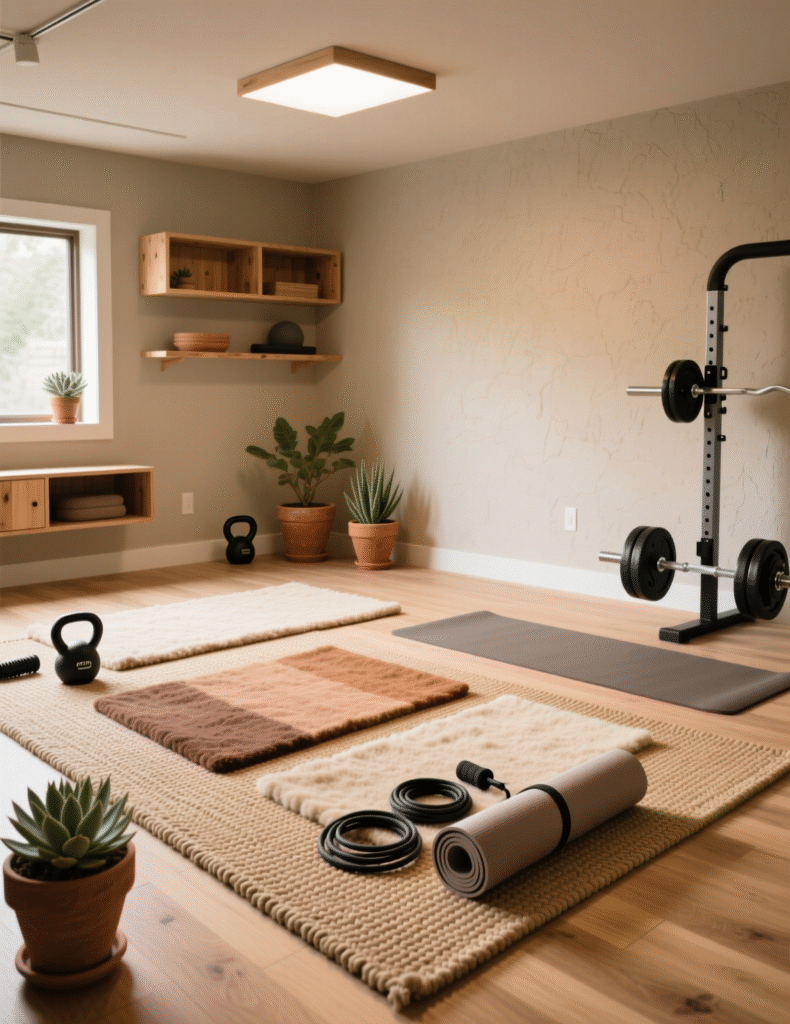
Instead of a single rug, layer small, textured mats in workout zones. Adds depth, softness, and warmth to the floor. Perfect for barefoot yoga or stretching. And it’s way cozier than bare wood.
15. Zen Wall Art with Functional Twist
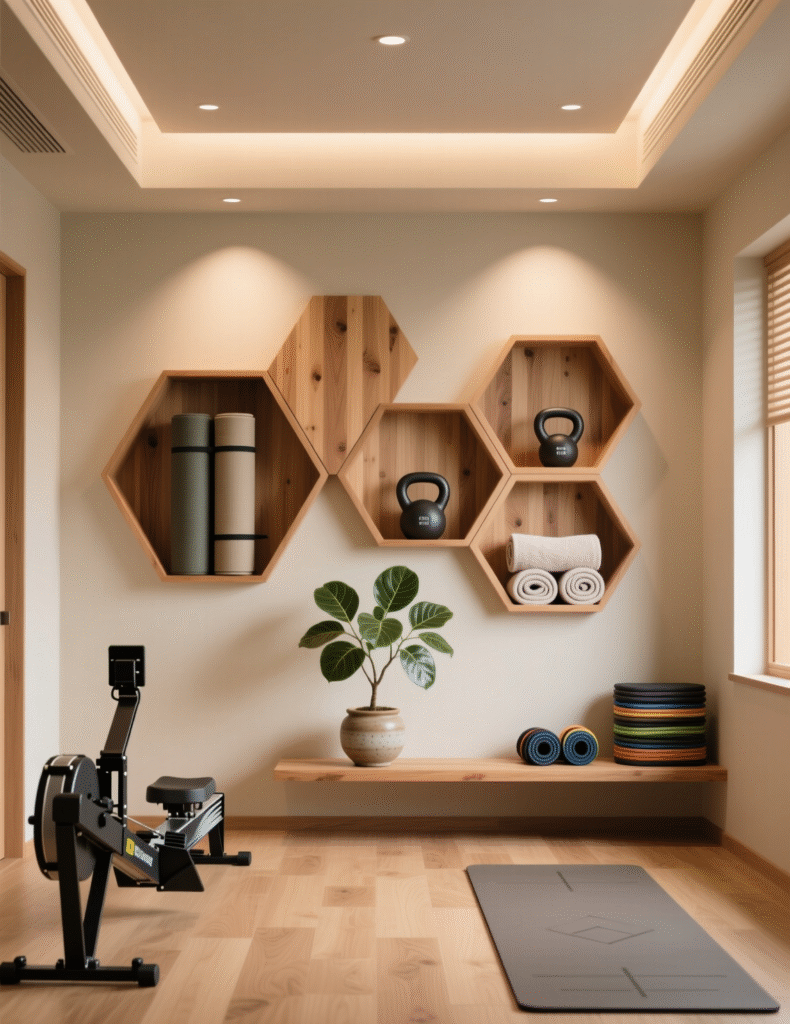
Install pegboards or slat walls that double as storage and decor. Attach kettlebells, bands, or mats in a visually pleasing arrangement. It’s art that actually serves a purpose, not just hangs there.
16. Create a Low-Ceiling Sanctuary
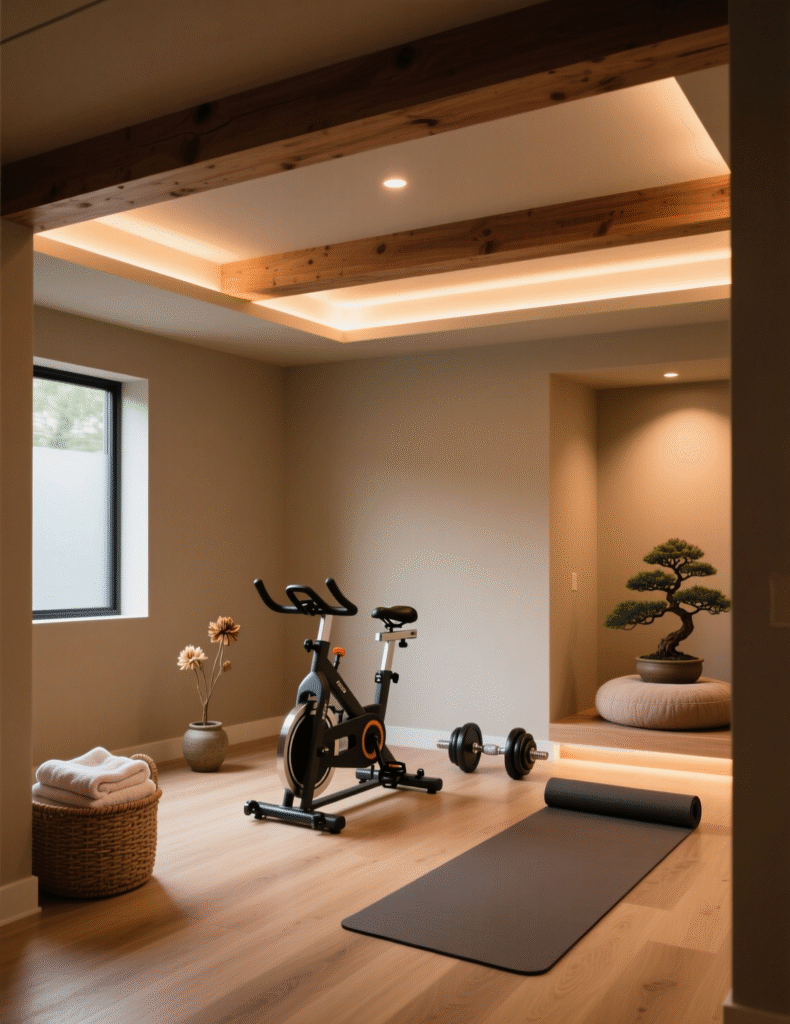
If your basement is tight on height, embrace it. Use low platforms, minimal furniture, and floor lighting. It feels intimate, almost Japanese tea room-inspired, perfect for meditation or core work.
17. Use Soft Fabrics for Accents
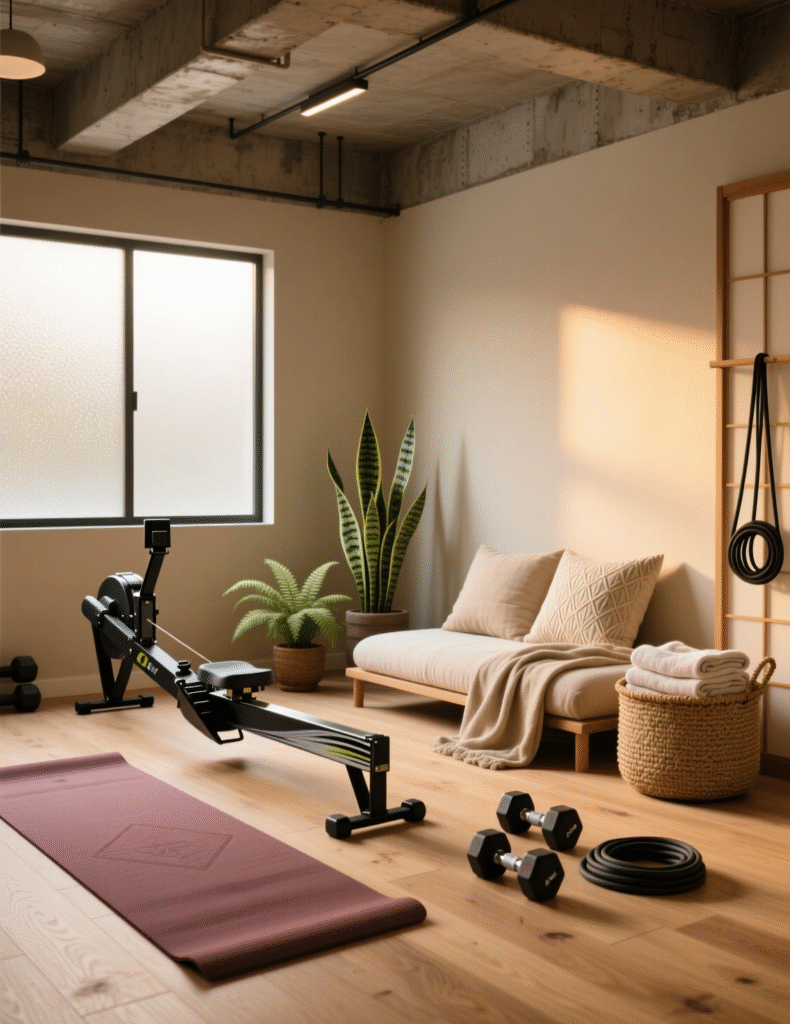
Throws, cushions, or fabric wall panels can soften the hard gym elements. Linen, cotton, or wool add texture and calm. Even a small bench with a linen cover makes the room feel more like a retreat than a gym.
18. Install a Small Indoor Garden Wall
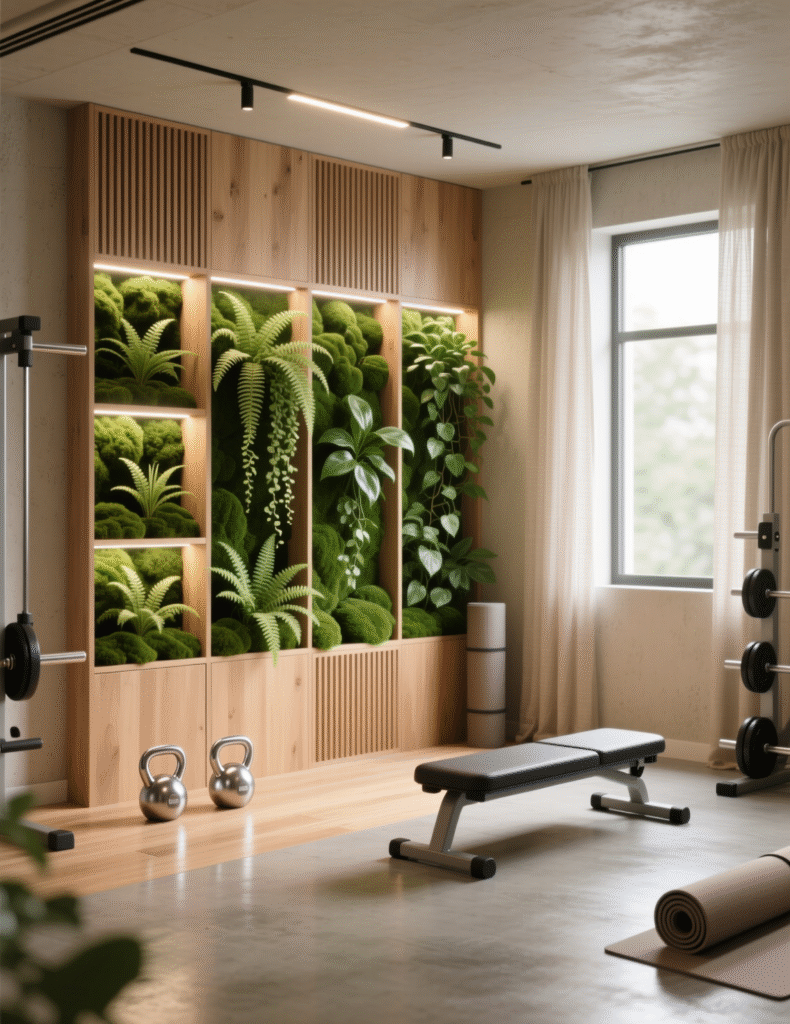
A vertical green wall saves space while adding natural beauty. Ferns, moss, or trailing plants bring life and improve air quality. It’s meditative to watch leaves sway while you stretch or do low-intensity workouts.
19. Reflective Surfaces Beyond Mirrors
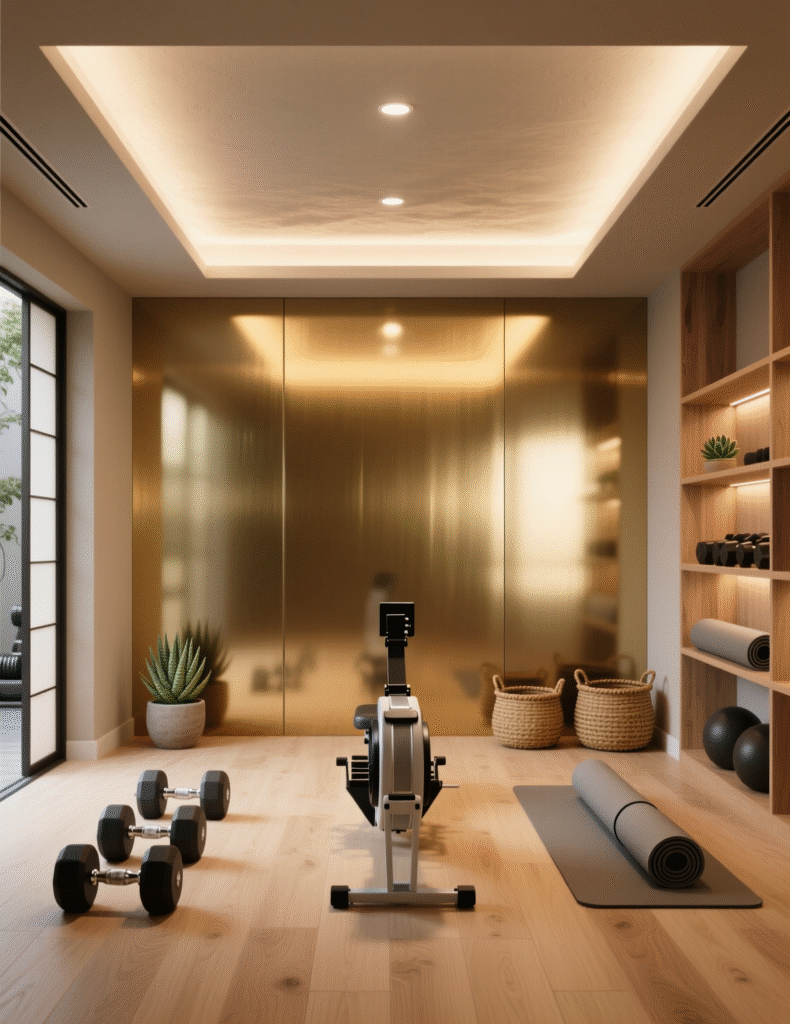
Metal or glass surfaces subtly reflect light and create the illusion of space. A polished countertop, small sculpture, or glass shelving adds dimension without clutter. Reflection becomes part of the design, not just a tool.
20. Accent with Handcrafted Elements
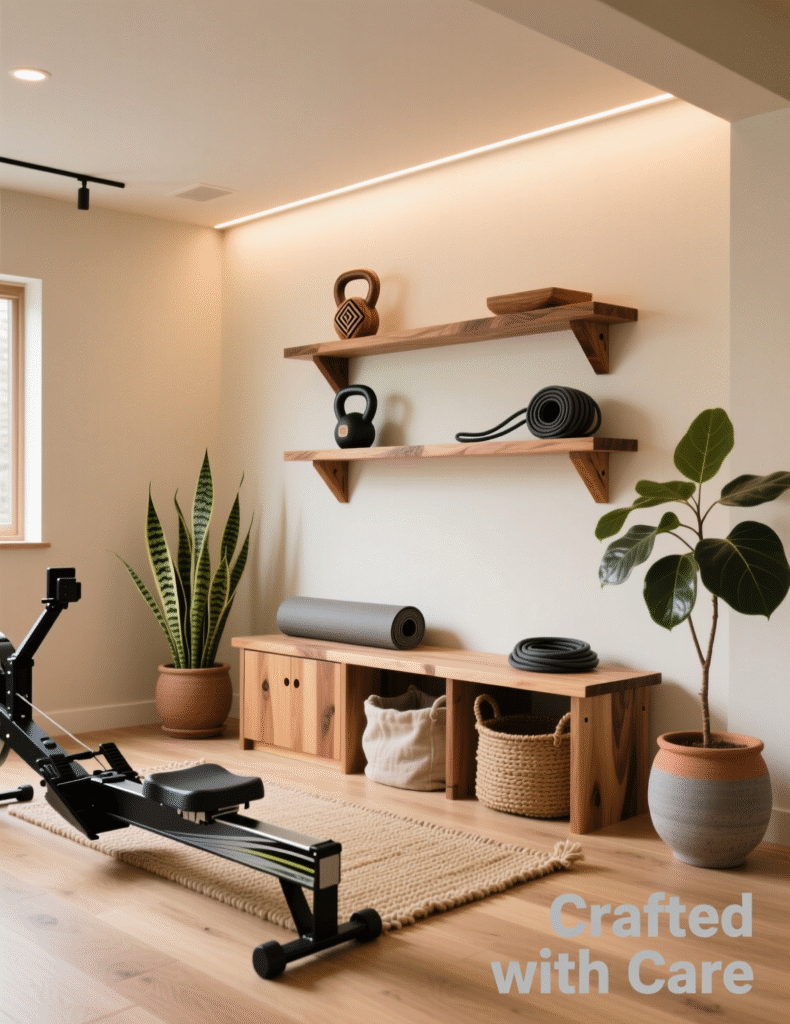
Japanese ceramics, carved wood hooks, or handmade baskets give personality to the gym. Minimalism doesn’t mean sterile—it means thoughtful objects. These small details make the basement feel curated, not showroom-ish.
Finishing Touches
Rugs in natural fibers, subtle lighting, and organized storage make a basement gym cozy and functional. Every inch matters. Even small things like a scented candle, a textured throw, or a wooden stool can elevate the space.
The Japandi style is about less, but better. It’s not flashy. It’s not loud. But it makes you feel calm, focused, and energized at the same time. A basement gym doesn’t have to feel like a cave. It can be warm, inviting, and stylish.
Even the ceiling counts. Light-colored wooden beams, or simple white paint, can open up the space visually. Avoid low-hanging lights or cluttered ductwork. You want a sense of breathing room.
Rethink the walls. Smooth plaster, soft-toned paint, or wood slats give subtle beauty. One textured wall can serve as a focal point without overwhelming the space.
Sound matters too. Soft acoustic panels, hidden speakers, or even a small fountain can absorb echo and create a pleasant atmosphere. A calm space is motivating. It doesn’t have to scream at you to work out.
Storage baskets and wooden crates aren’t just functional—they add style. Stack them neatly and hide extra equipment. Open shelving for things you use daily keeps the gym practical.
Small accessories like yoga blocks, foam rollers, or resistance bands should match the palette. Matte black, natural wood, or muted colors work best. Mismatched neon gear breaks the Zen effect.
Lighting layering is key. Overhead LEDs for general workouts, floor lamps or hidden strips for ambience. Dimmer switches let you adjust mood. Some workouts need brightness, some need calm.
Even mirrors have personality. Frosted, framed, or minimalistic—pick one that blends. Full-length mirrors help with form and visually expand the space.
Indoor greenery adds life. Bonsai, snake plants, or trailing vines. They soften hard edges and add a calm energy.
Flooring is crucial. Wood, bamboo, or cushioned tiles feel warm and grounded. Avoid cold concrete unless you layer rugs. Your feet will thank you.
The Japandi basement gym isn’t just a workout space—it’s a sanctuary. Each decision matters: lighting, materials, color, storage, and decor. Minimal, warm, functional, and beautiful.
Your basement can become your favorite room in the house. A calm, inviting gym that motivates and soothes. It’s less about fancy machines, more about mindful design.
When done right, you’ll look forward to workouts. You’ll enjoy yoga, strength training, and meditation alike. Even a small basement can feel expansive and inspiring.
Invest in quality over quantity. Every piece of equipment, every material, every plant matters. The result is a balanced, peaceful, and functional home gym.
The secret? Japandi is all about subtlety. Less clutter, more intention. Every corner whispers calm. You move, breathe, and exercise without visual chaos.
So take your basement. Clear it out. Bring in natural light, wood, muted colors, and minimal equipment. Add plants, soft textures, and a mindful corner. The space transforms.
You’ve got a serene, stylish, and functional Japandi basement gym. One that feels bigger, lighter, and more inviting than you ever imagined. Workouts become moments of calm. And isn’t that the real luxury?

Emma is a passionate home decor enthusiast and the voice behind Home Evoke. With a keen eye for design and a love for transforming spaces, she shares her expertise and creative ideas to help others create beautiful, functional homes. Through her blog, Emma inspires readers with practical tips, trend insights, and DIY projects that make home styling effortless and enjoyable.

